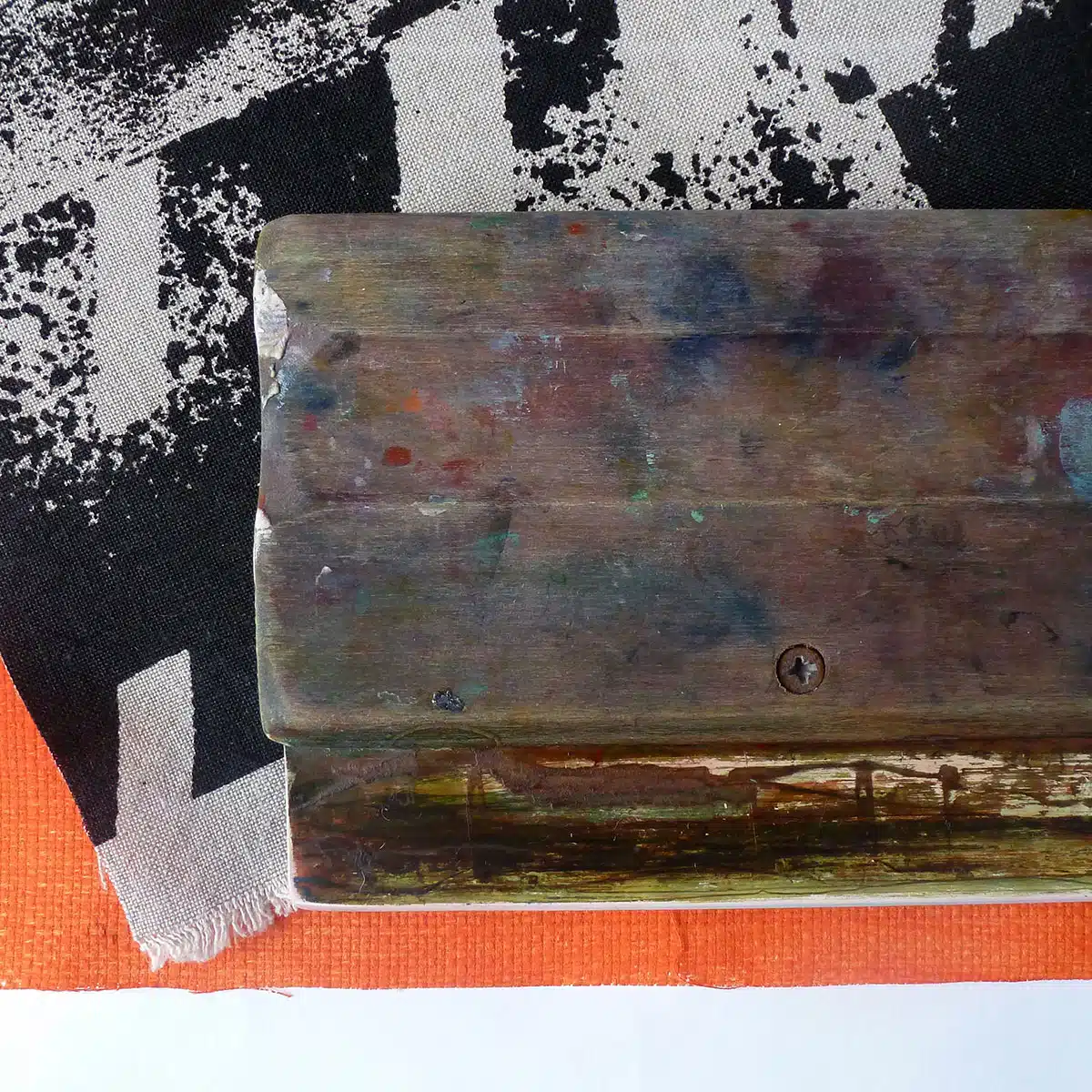What do you make?
One-off hand-printed/painted textile hangings and panels – I’ve been making them since I got a Crafts Council “Setting-Up Grant” in 1996. I sell and show my work through galleries, artists’ groups, agents and my local Artists’ Open House.
Tell us about your techniques
I start with photographs, sketches. And the computer, which has become a valuable tool in my design process. Then I print and paint onto a variety of textiles using dyes and pigments. I layer imagery and colour onto fabrics in contrasting textures using a mix of photographic and paper stencils. I’ve worked hard to hone my hand-made skills which I combine with a strong sense of colour, graphic imagery and a range of fabrics.
What has motivated you?
My mother sewing when I was a child – from then on, textiles became ingrained in my life. An art foundation enabled me to study Textiles at Goldsmiths College, and there I discovered printing. Highlights have been substantial commissions and showing at Collect with CAA. I also did a digital fine art course, where I created my own animation. Challenges have been mainly financial – and juggling family and work and what life throws at us. I’d like to do textile installations, and to expand my practice into architectural enamelling so I’m not restricted to indoor commissions.
And what inspires you now?
Graphic print, architecture, the materials and the excitement of watching a print emerge.
Describe your studio
Scruffy, cold and damp – not too good in winter. But it’s cheap for London and means I can work on a large scale. I need privacy, water and natural light. I’ve shared with another textile artist for about 20 years, and it’s worked out well. We took out one of the toilets and plumbed in a bath for the washout bay which is essential for screen-printing.
What’s your favourite tool?
It’s a squeegee. After hours of mixing colours, measuring and lining up stencils, getting the screen and fabric ready, it’s over after four pulls. It can be a tense moment, especially if I’m printing the last colour on a major piece of work. The anticipation is rewarded when I lift the screen and my eyes take in the beautiful fresh coloured ink – that’s truly my “yes” moment.
Any words of advice?
Learn to print by hand as well as making use of technology – the results are very different. Be flexible by creating a range of work. If you use hazardous materials, invest in the correct safety equipment.









